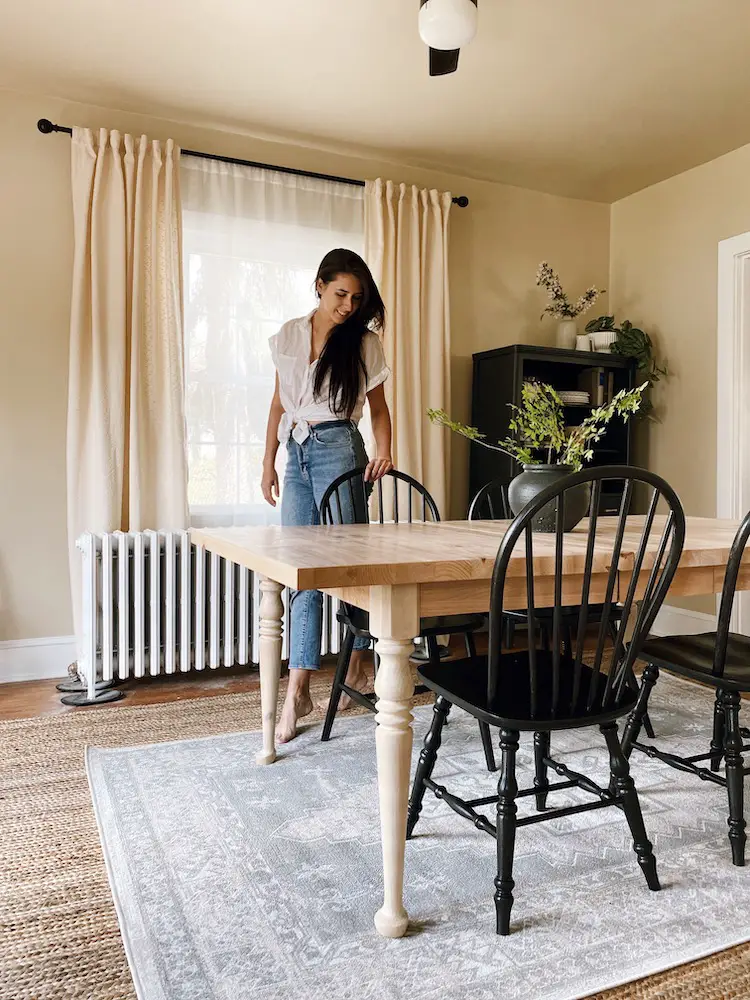A Detailed Look at Table Leg Styles: Discovering the Perfect Match
Selecting the appropriate table leg style is critical for both visual allure and practical performance. Standard four legs provide ageless elegance and security, while the pedestal base offers enhanced legroom and a contemporary appearance. For those with bigger tables, trestle legs make certain tough assistance, whereas hairpin legs introduce a mid-century modern vibe with their minimal layout. The x-shaped legs blend contemporary design with boosted stability. Each of these alternatives brings distinct benefits, making the choice greater than just a matter of choice. Discover further to uncover which design flawlessly enhances your eating space and way of life.
Conventional 4 Legs
Amongst the different types of dining table leg styles, the standard four-leg style remains a classic selection for numerous households. Four legs supply balanced assistance, ensuring the table stays stable and qualified of bearing significant weight (dining room table legs).
From a visual perspective, the typical four-leg design can be quickly adjusted to various interior styles. Whether crafted from wood, steel, or a combination of products, these legs can be intricately carved, sleek and minimalistic, or anything in between. Their adaptability allows them to complement both rustic and contemporary setups effortlessly.
Additionally, the simple framework of the four-leg design promotes convenience of motion and positioning within a room. Unlike more complicated bases, this design decreases blockages, giving enough legroom for restaurants. In recap, the standard four-leg dining table leg design marries sustaining beauty with functional performance, making it an astute choice for those seeking both kind and feature in their eating furnishings.
Pedestal Base
Often commemorated for its sophisticated and space-efficient layout, the pedestal base is a notable alternative to the typical four-leg configuration in eating table leg designs. Without corner legs, restaurants are paid for higher freedom of movement, making it a perfect option for round and oval tables that promote more intimate and comprehensive gatherings.
The main column itself offers a canvas for elaborate styles and creative expressions, adding a component of visual interest below the table. In recap, the pedestal base incorporates performance with style, making it an improved and practical alternative for diverse eating environments.
Trestle Legs
Trestle legs provide a robust and classic structure for dining tables, identified by their straight cross-bracing and tough support beams. Originating from middle ages times, this layout has evolved yet retained its necessary structure, making it a perennial fave in both conventional and contemporary setups. The main trestle light beam, often sustained by two or more upright blog posts, uses extraordinary stability, permitting larger table sizes without the demand for extra legs.
A significant benefit of trestle leg tables is the ample legroom they provide. Unlike tables with 4 corner legs, the lack of obstructions at the table's edges supplies unimpeded space for chairs and restaurants, improving comfort and access. This makes click here for more trestle tables ideal for accommodating bigger celebrations, whether in a dining-room or a reception hall.
From rustic farmhouse to smooth contemporary styles, trestle legs can be personalized to match specific preferences. Their long-lasting allure and practical benefits make trestle legs an engaging option for those seeking both design and usefulness in their eating table.
Hairpin Legs

The charm of barrette legs depends on their simpleness and versatility - dining room table legs. Offered in an array of materials, consisting of steel and brass, they can be finished in numerous shades to enhance various interior designs. Whether paired with a rustic wood tabletop or a contemporary glass surface area, hairpin legs effortlessly mix capability with a touch of vintage appeal
Durability is one more noteworthy attribute of barrette legs. Despite their delicate look, these legs are engineered to bear substantial weight, making certain the table continues to be steady and secure. Furthermore, they are reasonably very easy to install, making them a popular option for do it yourself fanatics and professional furniture makers alike.
X-Shaped Legs

Constructed from products such as steel, timber, or a mix of both, X-shaped legs can be customized to match different design choices. Steel legs often provide a smooth dig this and commercial feeling, perfect for loft-style houses and contemporary dining spaces. On the various other hand, wood X-shaped legs offer a warmer, extra rustic allure, suitable for farmhouse or diverse insides. The convenience in materials permits house owners to personalize their eating tables to much better fit their general design plan.
In addition, the engineering behind X-shaped legs guarantees also weight circulation, reducing the risk of tottering and boosting toughness. This makes them especially well-suited for larger table that need additional assistance. Fundamentally, X-shaped legs mix sensible design with modern-day looks, go right here making them a timeless option for varied dining environments.
Conclusion
A detailed understanding of table leg styles exposes the unique qualities and advantages of each style. Standard 4 legs use stability and timeless charm, while pedestal bases offer legroom and a streamlined appearance. Trestle legs make certain durable assistance for bigger tables, and hairpin legs present a mid-century modern-day visual. X-shaped legs integrate modern style with enhanced security. Choosing the suitable leg style makes certain both useful and aesthetic satisfaction in any type of dining space.